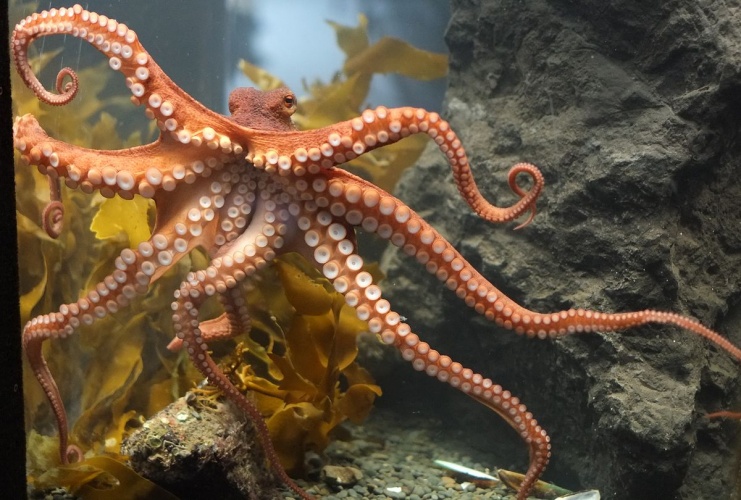Octopus skin inspires 3D camouflage material
Physicists and engineers from Cornell University have taken inspiration from octopus skin to design a new stretchy camouflage material.

(Credit: Pseudopanax via CC)
Octopuses and cuttlefish have small protrusions called papillae on their bodies, which can take on different shapes to help the cephalopods blend into their surroundings. The Cornell team mimicked this by embedding a laser-cut fibre mesh in a stretchy silicone elastomer. Using pneumatics to actuate the skin, small protrusions could be created in desired configurations similar to octopus papillae. The researchers refer to the technique as CCOARSE – Circumferentially Constrained and Radially Stretched Elastomer.
“To design a particular shape, you figure out what its slope is at every point, then you design the amount of strain by including more or less mesh in the region,” said Itai Cohen, a professor of physics at Cornell’s College of Arts and Sciences.
The work, which appears in the journal Science, was funded by a grant from the US Army Research Office. Though the military is primarily interested in the technology’s camouflage potential, there are several other possible applications including robotics and collapsible structures, as well as using the skin to control surface temperature.
Register now to continue reading
Thanks for visiting The Engineer. You’ve now reached your monthly limit of news stories. Register for free to unlock unlimited access to all of our news coverage, as well as premium content including opinion, in-depth features and special reports.
Benefits of registering
-
In-depth insights and coverage of key emerging trends
-
Unrestricted access to special reports throughout the year
-
Daily technology news delivered straight to your inbox










Water Sector Talent Exodus Could Cripple The Sector
Well let´s do a little experiment. My last (10.4.25) half-yearly water/waste water bill from Severn Trent was £98.29. How much does not-for-profit Dŵr...